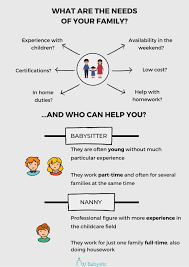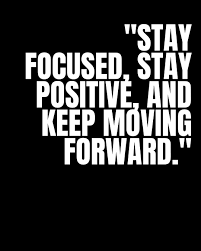In any successful relationship—whether personal or professional—communication is key. When it comes to families and the nannies or sitters who care for their children, that communication needs to be intentional and ongoing. One of the most effective ways to keep everyone aligned is through quarterly check-ins. These regular meetings can be game-changing for both families and caregivers, helping to strengthen trust, improve the care children receive, and ensure a positive working environment.
Below, we’ll explore why quarterly check-ins matter, what they should include, and how families and nannies can make them a collaborative and uplifting experience.
_________________________________________________________________________________________________________________________________________
Why Quarterly Check-Ins Matter
Nannies, sitters, and families often get caught up in the busy routine of daily life—school runs, homework help, snacks, activities, and bedtime. It’s easy for small issues or needs to be overlooked until they turn into bigger challenges. Scheduling a dedicated time every three months gives everyone a chance to pause, reflect, and discuss what’s working and what might need improvement.
Quarterly check-ins benefit everyone involved:
- For families: It’s a chance to ensure their children’s needs are being met and to address any evolving household expectations.
- For nannies and sitters: It’s an opportunity to express feedback, share wins, and clarify any changes in responsibilities.
- For children: When their caregivers and parents work as a team, they enjoy consistent routines, boundaries, and emotional support.
_________________________________________________________________________________________________________________________________________
What to Cover During a Quarterly Check-In
Think of these meetings as a friendly, structured conversation rather than a formal review. Here’s a guide to what families and caregivers might discuss:
- Child Development & Wellbeing
- Share updates on milestones, achievements, or concerns.
- Discuss changes in routines, sleep, diet, or behavior.
- Set new goals or introduce new activities to support growth.
- Household Logistics & Expectations
- Review daily schedules, carpooling, or after-school activities.
- Update any changes in house rules, safety protocols, or screen time limits.
- Check in on supplies—diapers, snacks, or craft materials.
- Job Satisfaction & Professional Growth
- Ask the nanny or sitter about what’s going well for them.
- Discuss any challenges, such as workload or communication preferences.
- Explore training, courses, or certifications the caregiver may want to pursue.
- Compensation & Benefits
- Review pay rates, overtime policies, and time-off arrangements.
- Adjust as needed for added responsibilities or cost-of-living changes.
- Confirm how and when payments are processed to avoid misunderstandings.
- Feedback, Gratitude & Recognition
- Families can express appreciation for the caregiver’s hard work.
- Nannies can share positive stories about the children’s growth or family support.
- Both parties can brainstorm ways to make the partnership even stronger.
_________________________________________________________________________________________________________________________________________
How to Structure a Successful Check-In
Even though the tone should be warm and collaborative, a little structure goes a long way. Here’s how to make these meetings effective and stress-free:
- Schedule in Advance: Pick a date and time well before the meeting so everyone can prepare. Consider aligning with school terms or seasonal changes.
- Choose a Comfortable Setting: A relaxed environment—over coffee at home or during a quiet afternoon—encourages open conversation.
- Create an Agenda: Families and nannies can each write down 3–5 points to cover. This ensures no one forgets something important.
- Use Positive Language: Frame discussions around what’s working and what could improve, rather than focusing solely on problems.
- Document Agreements: After the meeting, jot down key takeaways or changes. This helps avoid confusion later.
_________________________________________________________________________________________________________________________________________
Tips for Families
- Lead with Empathy: Remember, your caregiver is a professional providing valuable service. Approach the meeting as a partnership rather than a critique.
- Recognize Achievements: Highlight how the nanny has positively impacted your children. Recognition boosts morale and loyalty.
- Be Clear About Expectations: If you need a change in hours, responsibilities, or routines, articulate it directly and kindly.
_________________________________________________________________________________________________________________________________________
Tips for Nannies and Sitters
- Prepare Your Feedback: Jot down notes about what’s working well and what you’d like to improve before the meeting.
- Be Honest but Professional: This is your opportunity to raise any concerns about workload, communication, or boundaries.
- Showcase Wins: Share examples of how the children have thrived under your care or new activities you’ve introduced.
_________________________________________________________________________________________________________________________________________
Keeping It Positive and Forward-Focused
Quarterly check-ins aren’t just about troubleshooting—they’re about growth. Families and nannies can use them to set new goals, like helping a toddler learn new self-care skills or preparing a school-aged child for a big transition. They’re also a chance to reaffirm mutual respect and appreciation.
These meetings create a culture of transparency and teamwork. Over time, that strengthens not only the caregiver-family relationship but also the sense of stability and care that children feel.
_________________________________________________________________________________________________________________________________________
Sample Questions for a Quarterly Check-In
Here’s a quick list of conversation starters both sides can use:
- “What’s been working really well for our routine lately?”
- “Is there anything you’d like more support with?”
- “Have you noticed any changes in the children’s behavior we should discuss?”
- “Are there any new activities or skills you’d like to introduce?”
- “How can we make your job easier or more enjoyable?”
_________________________________________________________________________________________________________________________________________
The Bottom Line
Quarterly check-ins might feel like just another item on the to-do list, but they can transform how families and caregivers work together. By creating space for open dialogue, everyone wins—especially the children at the heart of the arrangement.
When families and nannies review and grow together, they don’t just manage a job; they build a true partnership. That partnership leads to better care, happier kids, and a stronger sense of trust on all sides.











